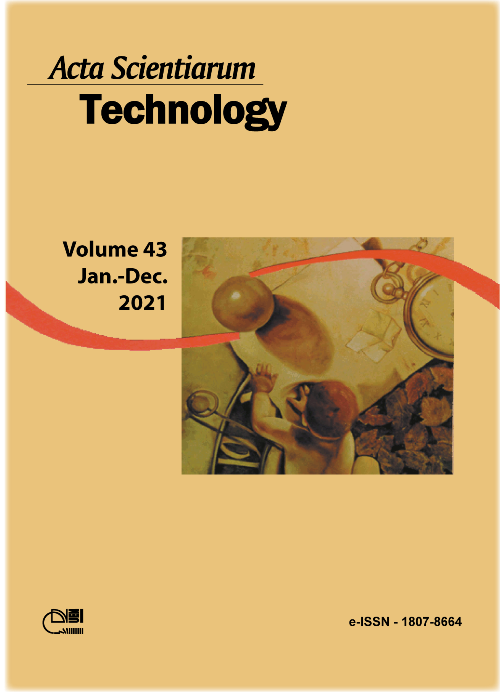The effect of mesh parameters on computational cost and results in simulation of milling in Inconel 718
DOI:
https://doi.org/10.4025/actascitechnol.v43i1.50363Palavras-chave:
mesh downsizing; machining simulation; AdvantEdge; FEM; shoulder milling; Inconel 718Resumo
The Finite Element Method analysis of machining processes has become a ubiquitous feature to the area, however, there sometimes occur considerable deviations between experimental and simulated results due to the inherent complexity of the process. The basis for such may conceivably be related to imprecisions in the material and friction modelling, besides improper setup of mesh parameters. Elements should be small enough to allow for the proper representation of the chip formation, but taking into account that the computational time increases accordingly with mesh downsizing. Simulations of the milling process of Inconel 718 were conducted using the software Thirdwave AdvantEdge under different cutting conditions for three different meshes. Power and temperature output were compared to experimental results, most of which were measured via Hall-effect sensors and thermographic camera, respectively. The tool cutting edge radius was found to be an important factor and was estimated using Scanning Electron Microscope images. The influence of the finite element mesh size was higher for harsher cutting conditions, with effects felt on machining power only. In this case, finer mesh produced results that showed a higher agreement with experimental data, but at higher computational cost as shown by analysis of elapsed processing time. Although errors higher than 40% were observed, power and temperature trends from simulations were always in accordance with that found in experimental tests. Comparisons with experimental data from other studies showed the errors tend to grow for higher feed and cutting speed, which indicates the constitutive model of the material is more adequate for softer machining conditions. Simulation time seemed to be exponentially proportional to the inverse of minimum element size, and measured values might serve as a reference for other users.
Downloads
Downloads
Publicado
Como Citar
Edição
Seção
Licença
DECLARAÇíO DE ORIGINALIDADE E DIREITOS AUTORAIS
Declaro que o presente artigo é original, não tendo sido submetido í publicação em qualquer outro periódico nacional ou internacional, quer seja em parte ou em sua totalidade.
Os direitos autorais pertencem exclusivamente aos autores. Os direitos de licenciamento utilizados pelo periódico é a licença Creative Commons Attribution 4.0 (CC BY 4.0): são permitidos o compartilhamento (cópia e distribuição do material em qualqer meio ou formato) e adaptação (remix, transformação e criação de material a partir do conteúdo assim licenciado para quaisquer fins, inclusive comerciais.
Recomenda-se a leitura desse link para maiores informações sobre o tema: fornecimento de créditos e referências de forma correta, entre outros detalhes cruciais para uso adequado do material licenciado.



















